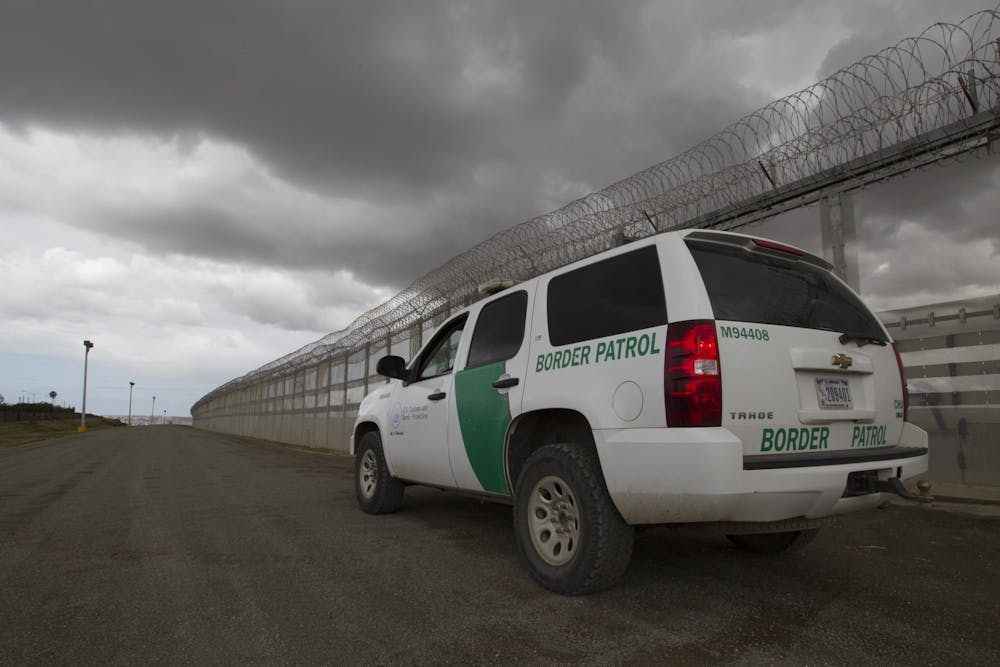Americans are in the midst of a synthetic opioid crisis. U.S. deaths from synthetic opioids have steadily risen from 1999 to 2021. In 2021, the U.S. death toll from synthetic opioids reached 70,601 people. The main cause of these deaths is a synthetic opioid called fentanyl. The fentanyl industry is powered by three major players — China, Mexico and India. These countries house transnational criminal organizations that cook fentanyl’s chemical inputs, create the finished fentanyl powder and lace the powder into other drugs that end up killing American users. In addition to providing the public with fentanyl-testing strips and over-the-counter Narcan, the device that administers naloxone — an opioid reversing drug — we should look into approving the Halt Fentanyl Act — also known as H.R.467.
Fentanyl is a cheap murder weapon. Fentanyl is 50 times stronger than heroin and 100 times stronger than morphine. It takes an average two milligrams of fentanyl, the size of 10 to 15 grains of salt, to kill a person. Moreover, fentanyl gives a more potent high at a cheaper cost. For scale, the precursor chemicals needed to craft a kilogram of fentanyl is $200 dollars or less whereas the plant-based opium necessary for a kilogram of heroin costs producers about $6,000 dollars.
On Mar. 29, the Food and Drug Administration approved over-the-counter Narcan to be sold in pharmacies around the U.S, setting precedent as the first opioid-reversing drug publicly available without prescription. That being said, we should not hail naloxone as a cure for an opioid overdose. Naloxone simply pushes back the overdose timetable. Naloxone’s temporary reversal of an overdose lasts between 30 to 90 minutes, enough time to get you to the hospital, and oftentimes a fentanyl overdose requires multiple doses of naloxone. Two doses of Narcan are relatively affordable, retailing around $50.
In 2019, around 60 percent of college-enrolled students aged 18 to 22 used illicit drugs, tobacco or alcohol in a given month. Only 0.4 percent of college students reported opioid use. Realize though, college students do not need to have a habit specifically for opioids to be at risk. There are many one-off instances of college-students unknowingly smoking, injecting or ingesting fentanyl-laced drugs and ending up hospitalized or dead.
At the University, we can do two things to address synthetic opioid and fentanyl use. We should have purchasable Narcan or fentanyl testing strips for University students — these strips cost a dollar a strip and can test if a substance is positive or negative for fentanyl.
While local interventions like over-the-counter Narcan and fentanyl testing strips will undoubtedly save lives, they are reactive interventions. We need to be proactive. The American government needs to tighten its domestic regulation on fentanyl prescriptions and products.
In 1970, the U.S. passed the Controlled Substances Act, which classified drugs into schedules based on their potential for abuse and medical use. Fentanyl is classified as a Schedule II drug, meaning it has high potential for user abuse but dually has uses in medical facilities. For comparison, Schedule I drugs, like LSD and heroin, have a high potential for user abuse too, but no allowable medical use.
A solution to the illicit manufacturing, packing and transport of synthetic opioids, which leads to the death of Americans, is getting the HALT Fentanyl Act through Congress. The HALT Fentanyl Act was introduced by U.S. Rep Griffith Jan. 24th before the House Committee on Energy and Commerce. H.R.467 would move the classification of fentanyl and fentanyl-related substances from a Schedule II drug to a Schedule I drug. This would mean fentanyl would have no more legitimate and legal use in medical facilities. This would help the domestic crackdown on fentanyl and fentanyl related substances because transnational crime organizations in Mexico are increasing production of illicit fentanyl pills that mimic pharmaceutical prescriptions. Moving fentanyl to a Schedule I designation would help the Drug Enforcement Agency not have to discern between illicit and authentic pill prescriptions because there would be no exceptions for medical possession of fentanyl.
The pharmaceutical and medical industry would be an opponent of H.R.467 as fentanyl would no longer be a medical intervention for patients. That being said, fentanyl is not used all that often in the first place. Plant-based morphine is considered safer and prescribed more often for pain management than fentanyl. Moreover, substitutes for fentanyl in cases of severe pain, like oxycodone, showed similar or superior pain-relieving effects compared to fentanyl, despite fentanyl having a higher drug potency on paper.
The synthetic opioid crisis is largely operated abroad and is more beyond the American purview than we would like to admit. But there is hope. The U.S. government must tighten up on domestic policy by supplying preventives like fentanyl testing strips, after-the-fact interventions like Narcan and approve legislation like H.R.467 that eliminates fentanyl possession discrepancies.
Rylan Dawson is an Opinion Writer who writes on Health, Tech, and Environment for The Cavalier Daily. He can be reached at opinion@cavalierdaily.com.
The opinions expressed in this column are not necessarily those of The Cavalier Daily. Columns represent the views of the authors alone







